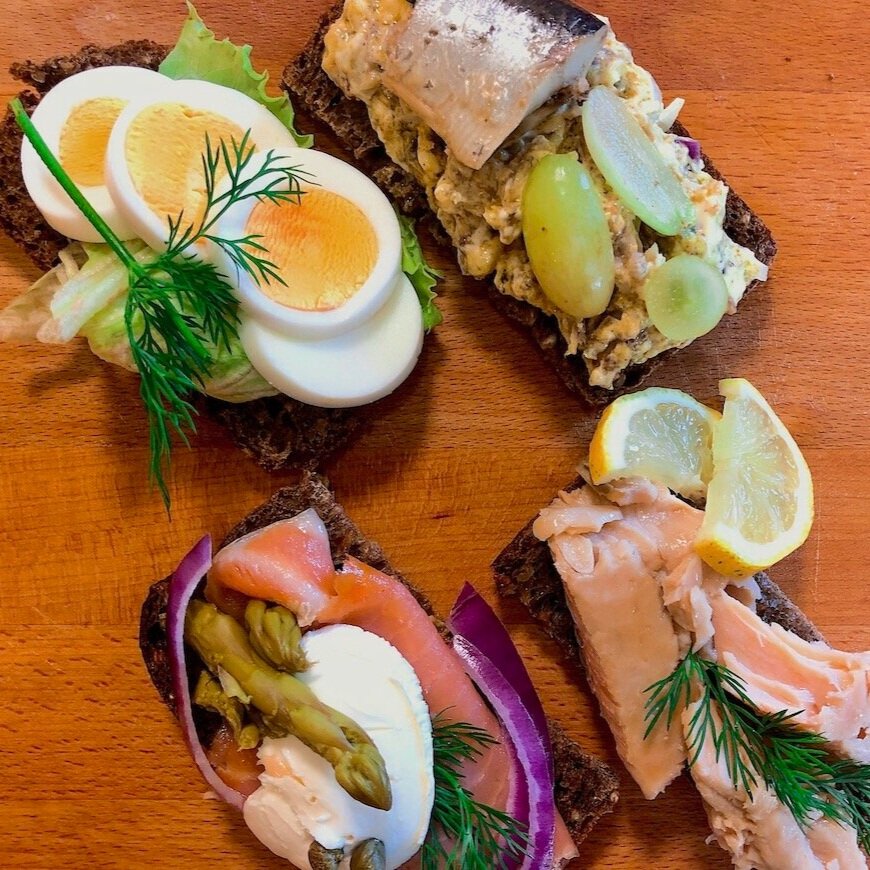BILLIE PHILLIPS
My mormor (which means grandmother in Danish) was 17 when she left home, setting her sights on a life of adventure, romance, strange climates and even stranger foods. Growing up in a small town outside of Copenhagen, she worked her way through countless cities before answering her sister’s summons to join her down in Australia - a country that promised warm weather and safety compared to war-torn Europe. My grandfather also made his way to Australia after spending some of his childhood in Wales. He was evacuated there as a boy, as part of an English operation to protect school children from the bombings during World War II. They met in Brisbane and married quickly, eager to create a new family after being separated from their own.
A quiet woman who has to be prompted to share her stories, I used to spend hours flicking through my mormor’s sepia toned photo albums of her childhood that seemed so far removed from our life here in Queensland. I realised years later that it was those photos and stories that set me on my own path.
Inspired by my grandparents’ travels, I would pour through the atlas in my parents’ living room, planning a life that I hoped would take me to similarly far-flung locations. I was always deeply proud and inspired by my mormor for setting out alone into the world, at a time where women had far more expectations levelled at them by their communities. From a young age she’d often counsel me to get out, see the world, to not tie myself down - advice that was contrary to what I was told by others. I always knew she was right.
“I WAS ALWAYS DEEPLY PROUD AND INSPIRED BY MY MORMOR FOR SETTING OUT ALONE INTO THE WORLD…”
I grew up on the Sunshine Coast in the 1990s, a place that is almost unrecognisable now. It was much more homogenous than it is today and it was unusual to have family from overseas. I remember when I was in middle school, a teacher asked each student to bring in a dish that represented their family, so I excitedly set about preparing a meal of venison (or deer) with a berry sauce. My classmates were disgusted when I explained to them about the kind of meat. I found their reaction confusing and frankly, a little sad.
At the time, the only food my friends knew was ‘Australian’, which is to say the stock standard menu consisting of meat (cooked long past well-done) and frozen veggies, that we all know so well. With my father, and most of my classmates, coming from a long line of country Australians, spices other than pepper and my mormor’s strange tastes for pickled fish and lard on rye bread were rarely on offer. The only exception was Christmas Eve, which we did Danish style. I wondered whether she missed sharing the food she grew up on with her family the other 364 days of the year. Each year, the food seemed like a warm reminder of where she’d come from. Uncomfortably warm, because unlike families in sunny Queensland, Scandinavians enjoy a piping hot spread of roasts, potatoes, and baked sweets that don’t naturally go with 40°C summer Christmas days.
My mormor, who does love this country, has never given up her proud Danish identity. She revealed only recently that she refused for years to take her Australian citizenship test, which she felt would be a betrayal to her family and, as she’ll happily say now, to her Queen. I think her kind of loving patriotism is difficult to relate to for many Australian millennials, especially for those of us who have spent some, or many, of our formative young adult years overseas and have real concerns about the direction Australia is heading.
The stories I heard from my grandparents lead me to take up asking questions and hearing new perspectives for a job. It was the only idea for a career I ever really had, and when I left university and headed overseas as a journalist I felt lucky to have the support of my family. I believe my grandparents’ experiences of fleeing conflict, and striking out alone to make a life somewhere safe, instilled in me a desire to amplify the voices of other families with similar experiences. I’ve been extremely fortunate to work with people from cultures and communities very different from my own, and I’m reminded of how we all have core values in common: the desire for safety, to be heard and understood, and to share something of our own background with others.
WHAT WE EAT IS MEANINGFUL
Smørrebrød is a traditional Scandanivian sandwich, usually served open-faced. It’s often whipped up at gatherings of family and friends, or just for a fast snack. I chose this dish because I used to find the ingredients too strange and never appreciated it until recent years - now I crave it all the time! Smørrebrød is commonly served with lard or liver pate.
DISH OF OUR HERITAGE
SMØRREBRØD A FEW WAYS



